An interview with Batool Soltani on MKO self-immolations – a précis of parts 35-36
Sahar Family Foundation: Let’s continue with the suicide operations carried out following the 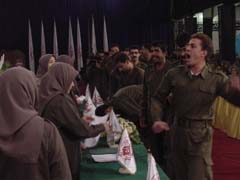 inauguration of a new phase, ‘operations of ultimate’, since the organization began a successive launch of operation in this phase mainly stressing on a strike and escape tactic. Please furnish further explanation in this respect.
inauguration of a new phase, ‘operations of ultimate’, since the organization began a successive launch of operation in this phase mainly stressing on a strike and escape tactic. Please furnish further explanation in this respect.
Batool Soltani: You know, before the beginning of the mentioned phase which began with the end of Iraq-Iran war, in years after 1987 the organization would dispatch its military teams across the Iranian borders, of course supported by Iraqi forces, for hit and run operations. Then it became bold to carry out bigger operations like that of Aftab, Chelcheragh, and Eternal Light as the last. Soon after the ceasefire, the organization began masterminding ‘operations of ultimate’; the best instances of these operations that ceased just before fall of Saddam are assassination of Sayyad Shirazi, Lajevardi, and widespread mortar attacks. Remarkable in these operations was the score of casualties from among the civilians. I remember that the family of the victims filled complains against the organization in international courts and the organization tried to acquit itself of the charges.
But your concern in these operations is where they tie with the suicide operation. The first important thing about the members of the teams dispatched for the operations was their readiness to venture their life. In fact, they had to prove their readiness to commit suicide to stymie the risk of being arrested alive. Unlike other overt military operations, they were covert operations that had a red-line to consider and no concrete evidence had to be left by the teams to be used against the organization. As a matter of fact, the teams had to pass a test to ensure they would not fail to observe the delineated red-line.
In contrast to regular military operations that the forces had the chance of retreating to their bases back into Iraq, in these operations that the teams penetrated deep into the Iranian soil the risk of capture was very high and retreat was actually impossible if they happened to be traced. The red-line to observe was to frustrate the hope of the regime’s forces to capture teams alive by committing suicide through swallowing cyanides or any other possible means at hand. Thus, the perquisite for the dispatched teams was the degree of their preparedness for committing suicide and they were supposed martyrs before setting off for the operations.
The means of suicide had to be necessarily checked as the first priorities along with other weapons needed for the operations. They were cyanides, hand-grenades, and guns and the teams received special trainings to use them in critical situations. Of course, they received other psychological and security trainings to counteract after-arrest tortures and pressures if they failed to commit suicide and fell into the hands of the regime’s forces. In general, any thought of compromise was a taboo; there was no alternate but to kill or be killed.
They in the organization would say the arrested members had to suffer under the tortures which were one hundred times worse than being killed for once since one might fail to tolerate pressures and would surrender which was equal to an attached stigma. Then they would bring examples of those who had easily assented to cooperate with the regime to be relieved of sufferings and tortures. Thus, the teams became resolute to commit suicide when facing a serious situation that increased the risk of arrest and even the team-mates had orders of killing each other when they would reach an impasse to escape. Here, it was not important who was at the charge, regardless of any organizational ranking, any member of the team had the responsibility of judging the right time for the action, to kill himself/herself or the other mates.
SFF: How long did it take to prepare a member for the operations? Your reference to the nature of trainings indicates that it could take a longer process than the ordinary ones to prepare them.
BS: Naturally, the operation teams were different. One of the factors they deemed necessary for the ‘operations of ultimate’ was not to select the team members from among the old members. Second, the team members had to have nursed a grudge and hatred against the target/s they were dispatched to hit. In fact, the feelings that rose within them had to be spurred on by sheer personal hatred of the targets and thus, the competency and organizational ranking had the second priority. Such motivated teams were much trusted for committing suicide and I can tell you that the one they chose for the assassination of Lajevardi had hardly finished his two years of preliminary training to be accepted as a joined member and to become a veteran. What had motivated him from the very beginning to join the organization was his grudge against Lajevardi and eventually succeeded to convince the organization to be enlisted in the operation team dispatched for his assassination. In fact, the organization was thinking of exploiting new recruits who knew little and so could impart little if arrested alive.
That was one of the reasons behind the policy of replacing new recruits for the old, experienced members in the operation teams; the organization was reluctant to risk the life of the older members for the time and needed them for the influential role they could play. Besides, the confessions of these older members after their arrest could disclose what the organization strived to conceal from the lower ranks to stop them having a low opinion of the organization that could influentially affect their fighting morale.
SFF: What happened in the interim between the teams arrange and their departure?
BS: As soon as the teams were selected and arranged, the members would be lodged in isolation totally cut off from other members and received no more organizational information. In fact, they had no more contact with others and reached a zero point of no updated information. Second, they would form a new profile just like ordinary people with grown beards. There were other physical, medical and psychological tests as well as recurrently going through the details of their operation and practiced them. And then, they came to the stage of going over the methods of committing suicide; how to break and swallow cyanide capsules, use hand-grenades or guns.
They reached the mastery point when they did all things blindfolded. They also sat watching thriller and military movies that kept them morally high and motivated; the hostage-taking movies were appropriate training classes that instilled in them a working solution that could help them get out of the critical situations. Other trainings included the ways of smuggling the weapons and ammunition over the border and past the sensitive points and stations as well as drawing the outlines of camouflages that allowed them to advance without alerting the guards and police forces. One thing the organization insisted on even during the operations was regular confession sessions of cleansing; the teams had to arrange sessions among themselves regularly with the imbued belief that their success or failure all depended on the constancy of the organizational tradition.
SFF: What was the information they were kept away from while in isolation?
BS: From the time they were put in isolation, they would take part in no general meeting with the presence of Massoud and Maryam and no ranking member had the permission to contact them. As there was no new information, the old ones became outdated and thus, their latest information was limited to what they knew about four months ago. In fact, isolation washed their brains of any latest information that could be of any challenge to the organization if they happened to be arrested and talk.

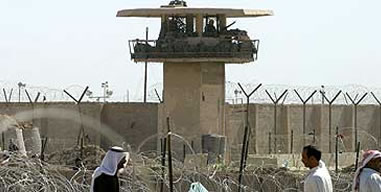 the organization considers two functions for the camp, political and strategic with your focus more on the latter function. You also had references to the organization’s attempts in the West to preserve Ashraf which I classify as the former function. Do you have anything more to add?
the organization considers two functions for the camp, political and strategic with your focus more on the latter function. You also had references to the organization’s attempts in the West to preserve Ashraf which I classify as the former function. Do you have anything more to add?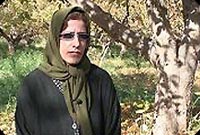 Sahar Family Foundation: Ms. Soltani, you have put your finger on an issue worthy of note, that is, victimizing insiders and sending them to their death. Did they really theorize such issues for the insiders with concretized exemplars from the outside?
Sahar Family Foundation: Ms. Soltani, you have put your finger on an issue worthy of note, that is, victimizing insiders and sending them to their death. Did they really theorize such issues for the insiders with concretized exemplars from the outside? Rajavi believed there was no need to let the lower body be enlightened about the matters discussed in top levels which could mount unnecessary tensions. It was enough to move on a slow path or effusive acts like that of the June 17 immolations. What was of the significance and vital for the organization was to keep rank and file in readiness and ripe for suicide operations through justifications that could be embedded in them from the top. I tell you for sure that if the subordinate members knew the truth and what they plotted at top layers, half of them would detach from the organization; their role was to materialize the chimeras of the leaders. In contrast to them, the higher echelons had the responsibility of constantly testing the inferiors’ loyalty and readiness and lay the groundwork. Even they would be equipped with the prerequisite means of suicide in a practical test to calculate reactions.
Rajavi believed there was no need to let the lower body be enlightened about the matters discussed in top levels which could mount unnecessary tensions. It was enough to move on a slow path or effusive acts like that of the June 17 immolations. What was of the significance and vital for the organization was to keep rank and file in readiness and ripe for suicide operations through justifications that could be embedded in them from the top. I tell you for sure that if the subordinate members knew the truth and what they plotted at top layers, half of them would detach from the organization; their role was to materialize the chimeras of the leaders. In contrast to them, the higher echelons had the responsibility of constantly testing the inferiors’ loyalty and readiness and lay the groundwork. Even they would be equipped with the prerequisite means of suicide in a practical test to calculate reactions.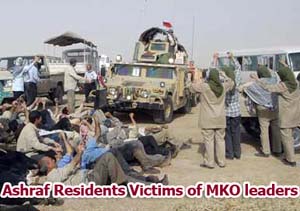
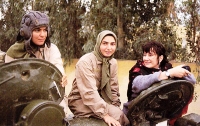 on Neda who was hardly of any weight and importance within and without the organization until she was burned to death, an anonymous girl who had suddenly become the focal attention of the media in a week. I believe she achieved preeminence in public and it can be said that she had great impact on the whole situation. Of course, that was exactly what the organization expected. As Neda’s case is sensitive, let’s talk about her and her life and struggle background and I will pose further question if necessary.
on Neda who was hardly of any weight and importance within and without the organization until she was burned to death, an anonymous girl who had suddenly become the focal attention of the media in a week. I believe she achieved preeminence in public and it can be said that she had great impact on the whole situation. Of course, that was exactly what the organization expected. As Neda’s case is sensitive, let’s talk about her and her life and struggle background and I will pose further question if necessary.  However, Neda left for the Europe simultaneous with Maryam’s relocation to France. Of course, Neda had been raised and living in Europe and came to Ashraf after she was graduated.
However, Neda left for the Europe simultaneous with Maryam’s relocation to France. Of course, Neda had been raised and living in Europe and came to Ashraf after she was graduated. 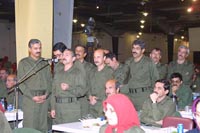 organization’s use of an internal jargon on which one can collect a book. You have repeatedly used such jargons in the course of you interviews and that may be because you have failed to find equivalents for them or you are used to using them. One of these jargons is the term ‘pardakhtgar’. If you please, start by explaining about this jargon.
organization’s use of an internal jargon on which one can collect a book. You have repeatedly used such jargons in the course of you interviews and that may be because you have failed to find equivalents for them or you are used to using them. One of these jargons is the term ‘pardakhtgar’. If you please, start by explaining about this jargon. 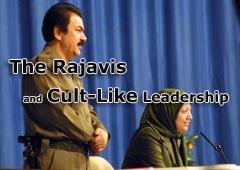 organization’s persuasive approaches in its contact with the victims’ families with particular emphasis on Neda’s family. Did not such dual behavior raise any suspicion when the family saw that on the one hand the organization eulogized Neda as a holy martyr but on the other hand claimed her immolation as an impulsive and willful act? Did the organization or Maryam have any other scenario to justify the dual deal?
organization’s persuasive approaches in its contact with the victims’ families with particular emphasis on Neda’s family. Did not such dual behavior raise any suspicion when the family saw that on the one hand the organization eulogized Neda as a holy martyr but on the other hand claimed her immolation as an impulsive and willful act? Did the organization or Maryam have any other scenario to justify the dual deal?